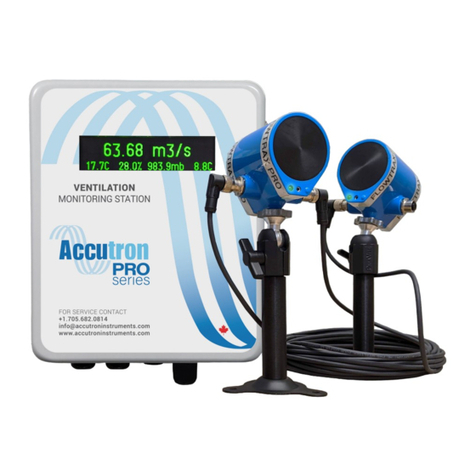
ii | Page
Table of Contents
Important Notice ........................................................................................................................................... i
Section 1: General Information..................................................................................................................... 1
1.1 The Manual ......................................................................................................................................... 1
1.1 Safety Guidelines ................................................................................................................................ 2
1.2 Information about your system .......................................................................................................... 2
1.3 Accutron IS Series Specifications ........................................................................................................ 3
Section 2: Installation.................................................................................................................................... 4
2.1 System Explanation............................................................................................................................. 4
2.2 Choosing a Location ............................................................................................................................ 5
2.3 Mounting the Display.......................................................................................................................... 5
2.4 Mounting the Sensors......................................................................................................................... 6
2.5 Connecting the Sensor Cables............................................................................................................. 6
Section 3: Programming................................................................................................................................ 7
3.1 Navigation Buttons ............................................................................................................................. 7
3.2 Programming Datasheet ..................................................................................................................... 8
3.3 Auto Range Feature ............................................................................................................................ 9
3.4 Menu Flow Chart............................................................................................................................... 10
Section 4: Modbus ......................................................................................................................................18
4.1 Modbus Register ............................................................................................................................... 18
4.2 Modbus Connection.......................................................................................................................... 19
Section 5: Troubleshooting......................................................................................................................... 20
5.1 Frequently Asked Questions .............................................................................................................20
5.2 Troubleshooting Flowchart............................................................................................................... 22
Appendix A .................................................................................................................................................. 24
Glossary...................................................................................................................................................24
Equations ................................................................................................................................................25
Accutron IS Drift Replacement Parts List – Mine Drift Airflow Sensor ................................................... 26
Accutron IS Fan Replacement Parts List – Mine Fan Airflow Sensor ...................................................... 27
Accutron IS Drift component checklist ................................................................................................... 28
Accutron IS Fan component checklist..................................................................................................... 28
Appendix B – Diagrams ............................................................................................................................... 29






























